Fuchsia 'Tom West'
Family: Onagraceae
Pronounced: FEWK-see-ah (Most people pronounce it FEW-shah.)
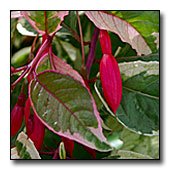
Quick Jumps
Growing Guide
Rainy Side Notes
GROWING GUIDE
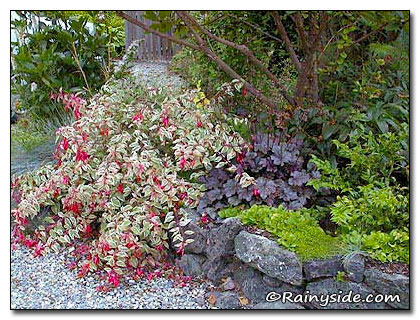
Garden.
Plant Group:
Subshrub.
Hardiness:
Sunset zones: No listing.
USDA zones: 7-10.
Mature size:
Height: 2 feet (60 cm).
Width: 3-4 feet (90-120 cm).
Flowering period:
Summer until first frost.
Flowering attributes:
Red sepals and purple corollas.
Leaf attributes:
The beauty of this sub shrub is its red stems that carry variegated cream, green, and red leaves with red veins.
Light:
Partial shade—morning sun with afternoon shade.
Soil:
Fertile, moist, well-drained soil.
Feeding:
Heavy feeders, so fertilize monthly with a complete organic fertilizer, from spring through July.
Propagation Methods:
Softwood cuttings in spring.
Semi-ripe cuttings in late summer.
Pruning Methods:
After buds begin to swell in spring, prune dead twigs back to where there is new growth along the stem. Fuchsias die back to the ground in colder regions of our maritime climate. In milder areas of the Pacific Northwest, hardy fuchsias will normally winter over with little die back, with the exception of harsher then normal winters. When this happens, prune dead stems to ground level. At times when fuchsias do not die back after a few years of mild winter weather, they can grow considerably large. Prune in spring when necessary to reduce size.
Rainy Side Notes
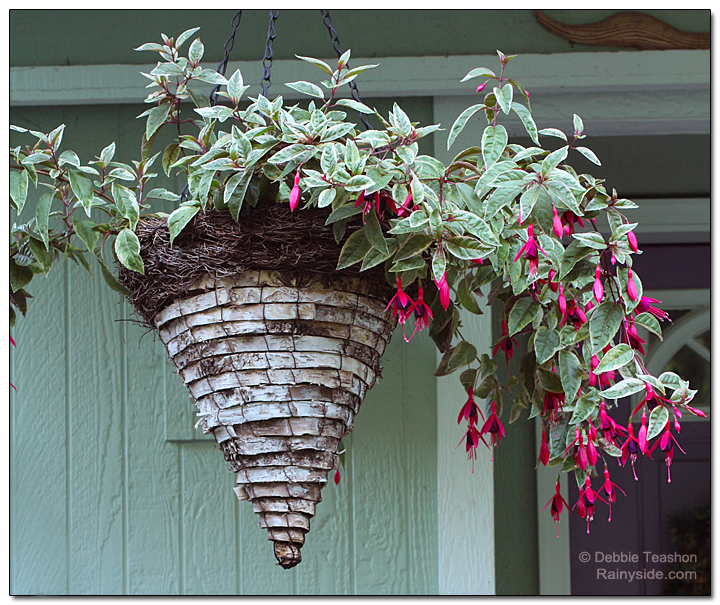
We can thank hybridizer Meillez, who found ‘Tom West' as a sport on Fuchsia ‘Corallina' in the mid 19th century. This upright, but lax perennial adds vibrant color to the sunny garden. ‘Tom West' grows in full sun; however, I grow it in the partial shade created by a large rhododendron. Although pretty in themselves, the flowers tend to get lost in the vibrant leaves. The foliage is the main reason I grow this fuchsia that looks amazing trailing over a wall, container, or in a hanging basket. Even sprawling on the flat ground, the plant is a jewel in the garden. Face it, this is a remarkable fuchsia!
Photographed in author's garden.
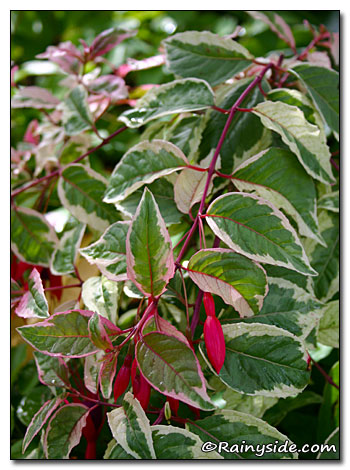
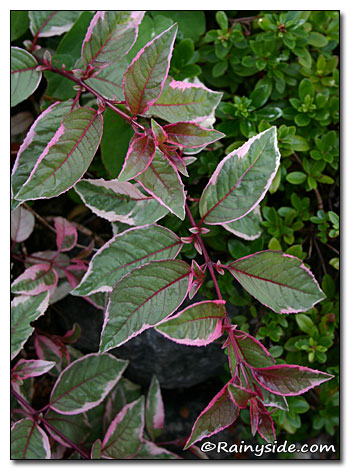

Gardening for the Homebrewer: Grow and Process Plants for Making Beer, Wine, Gruit, Cider, Perry, and More
By co-authors Debbie Teashon (Rainy Side Gardeners) and Wendy Tweton
Copyright Notice | Home | Search | Perennials

